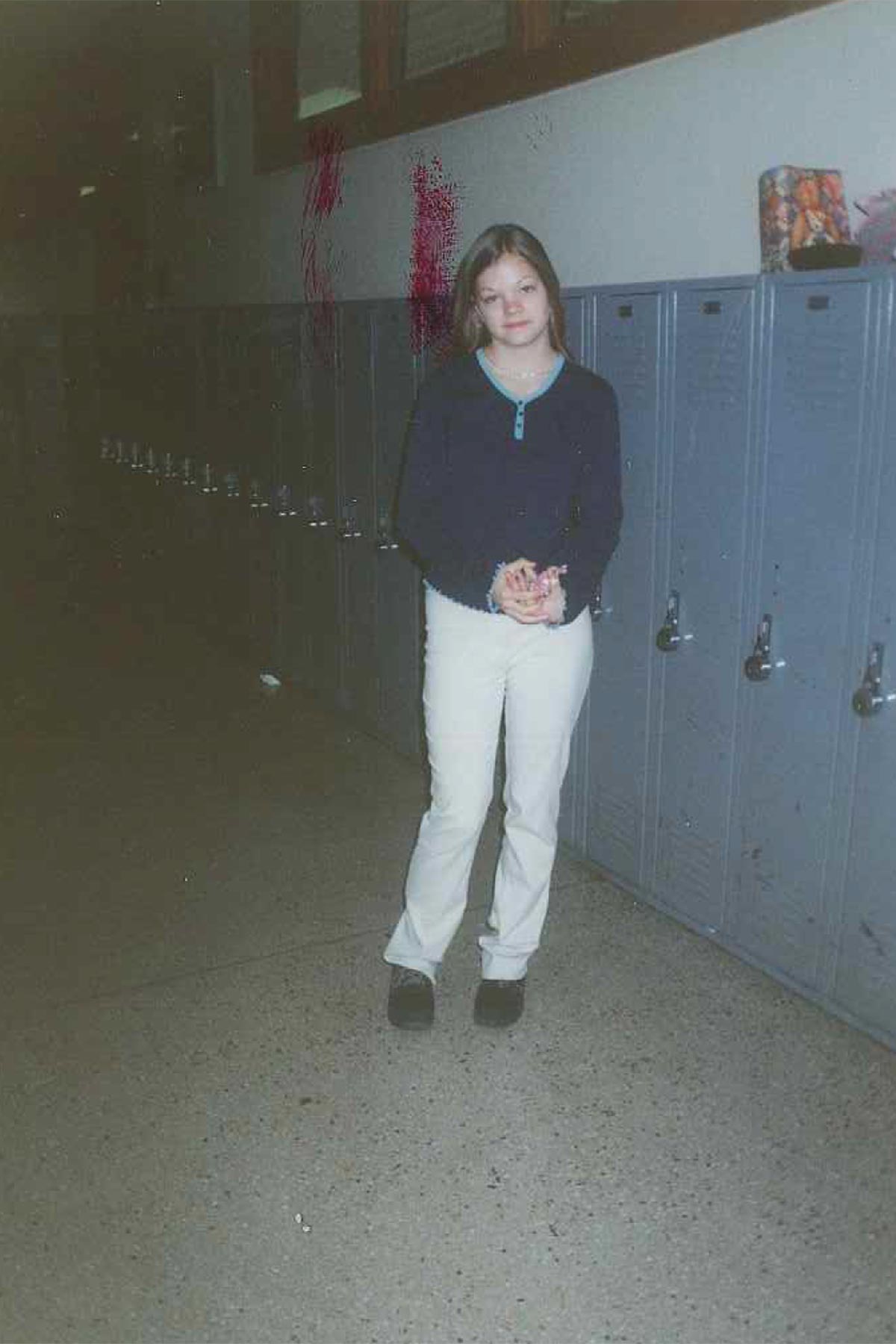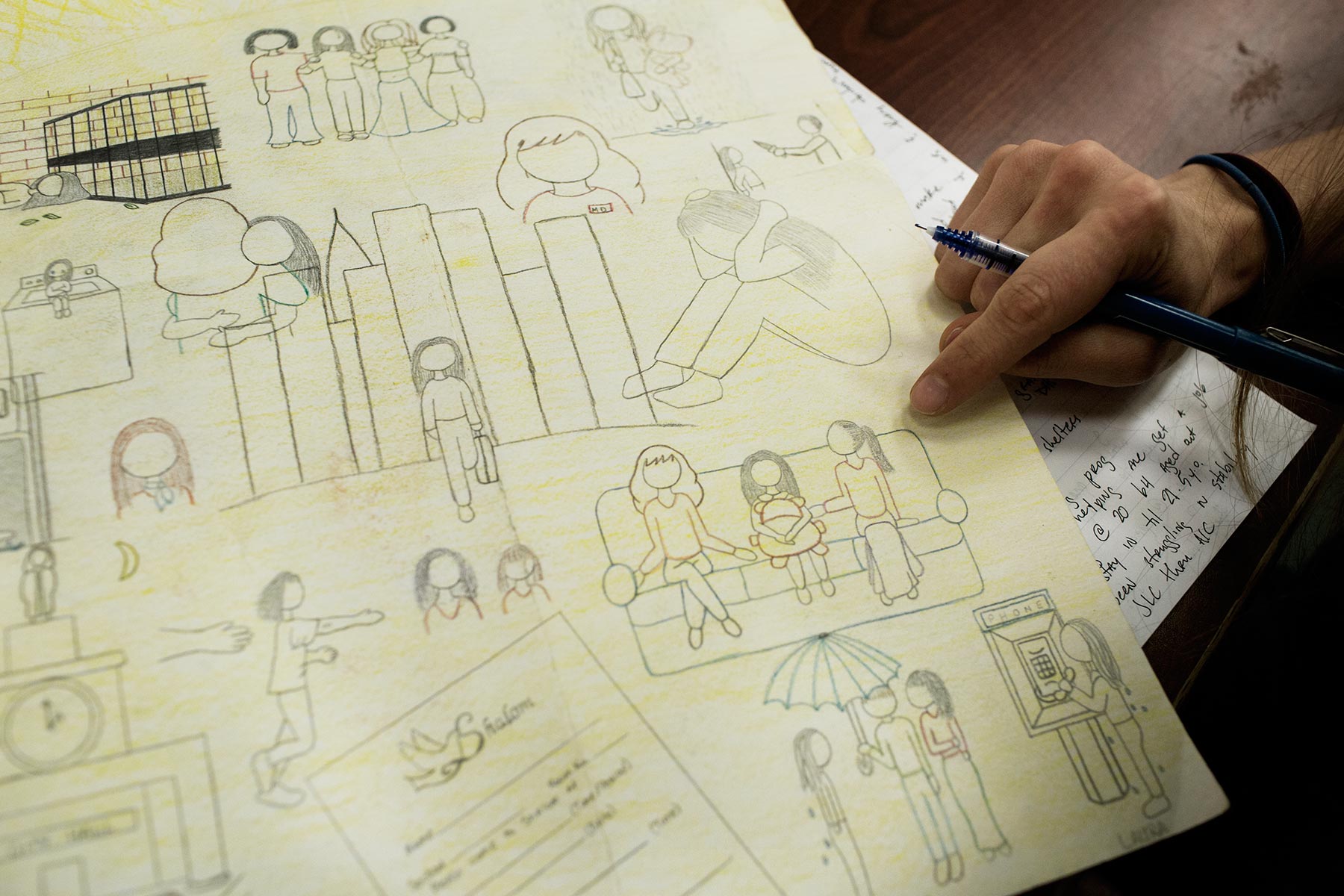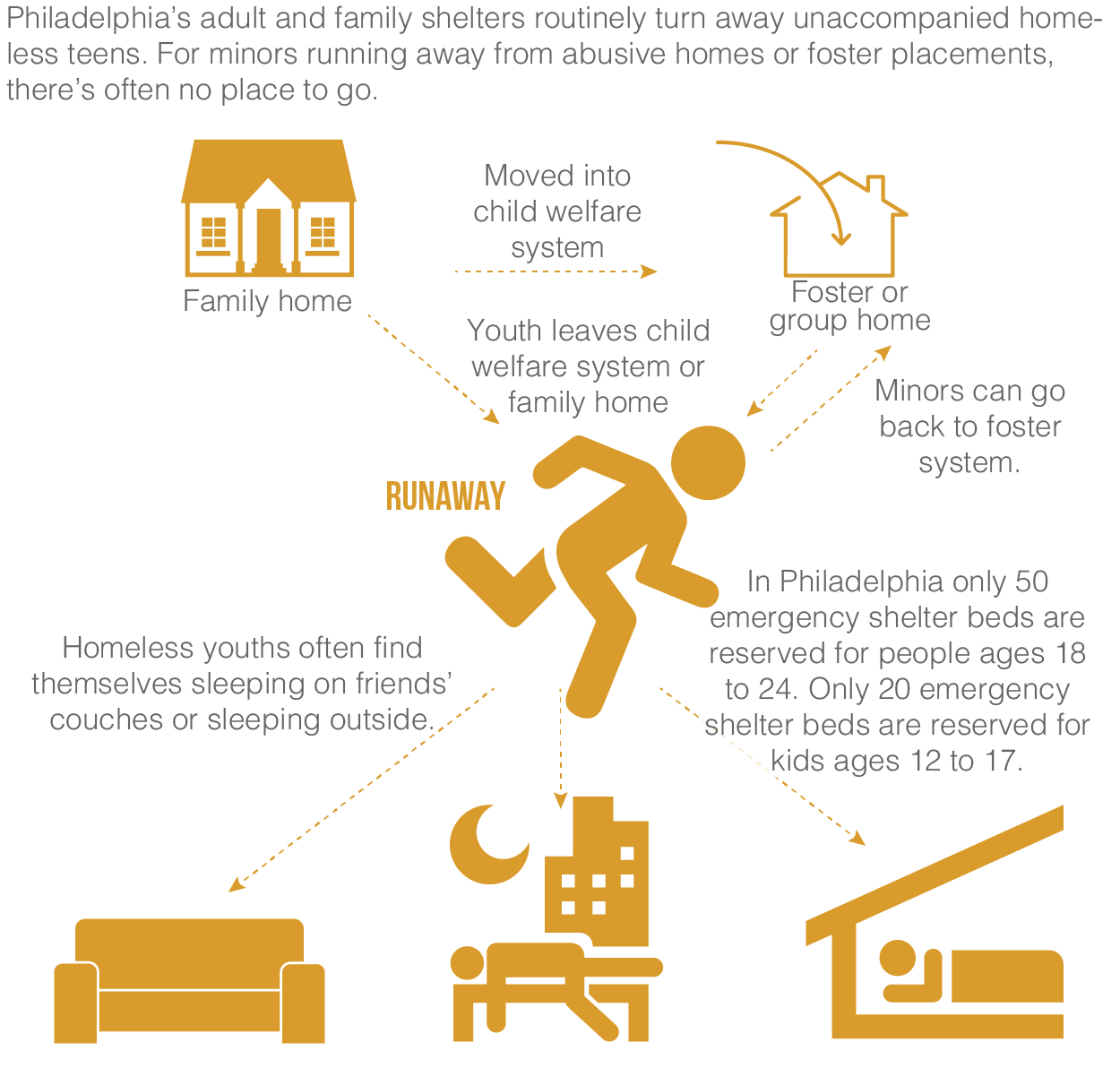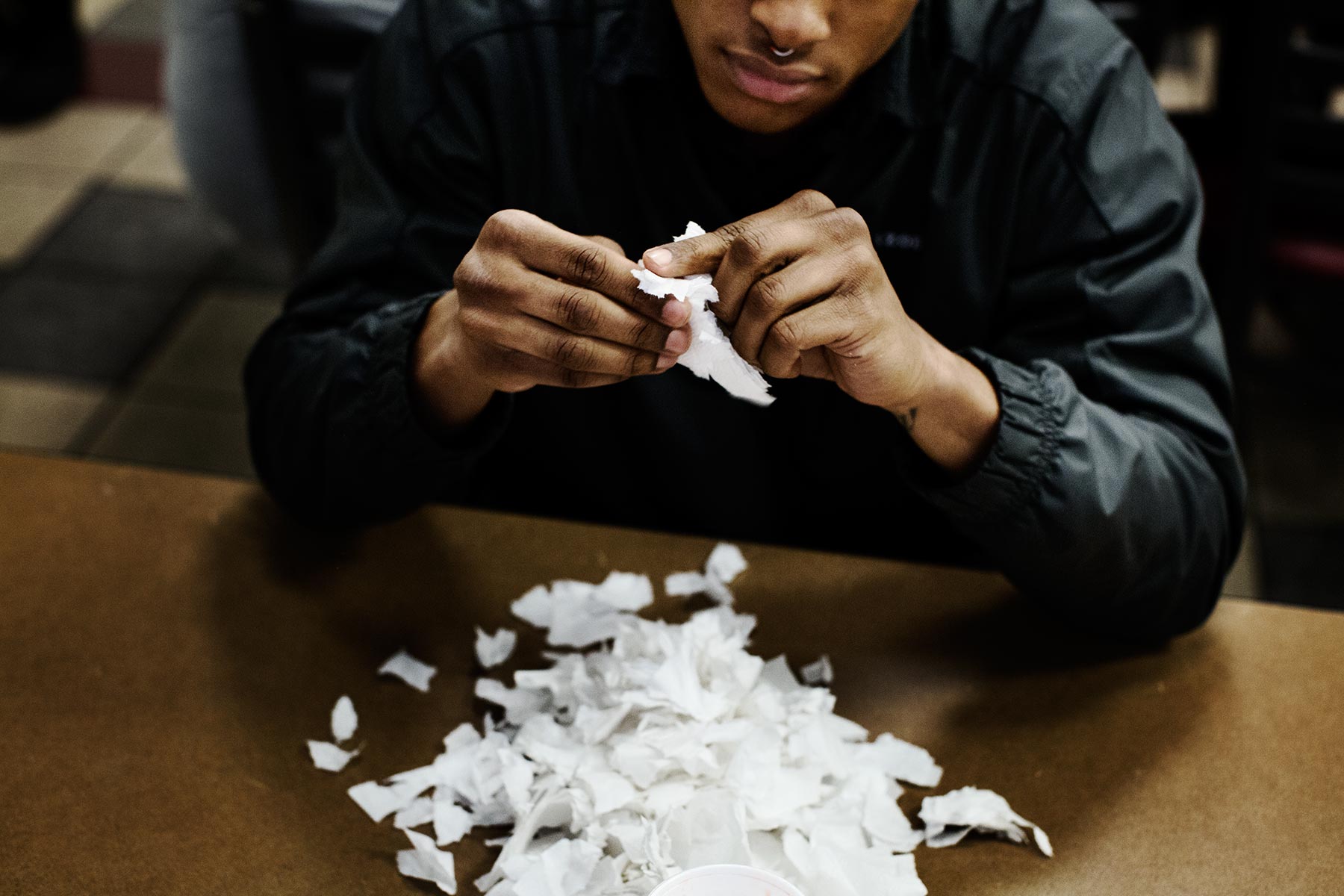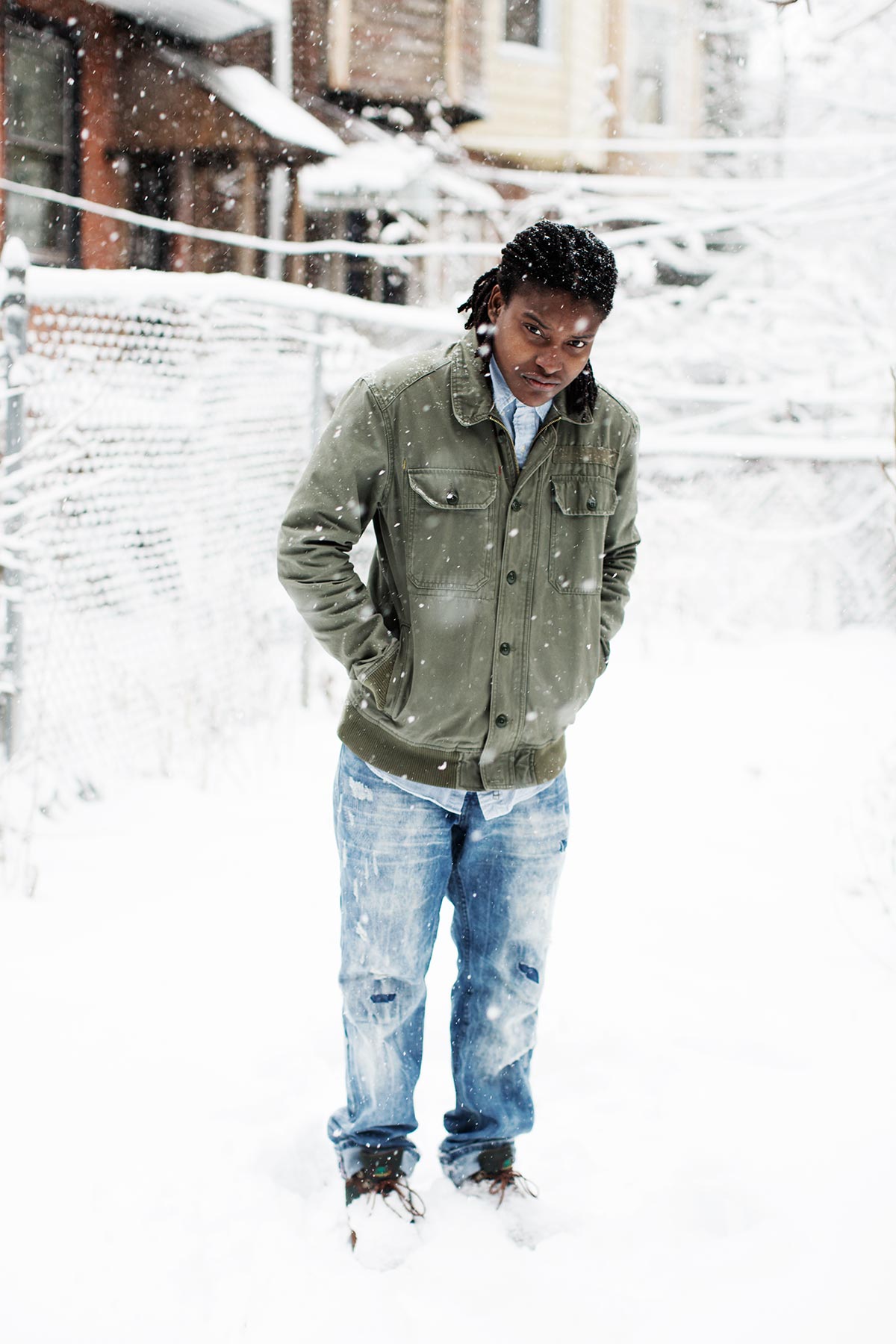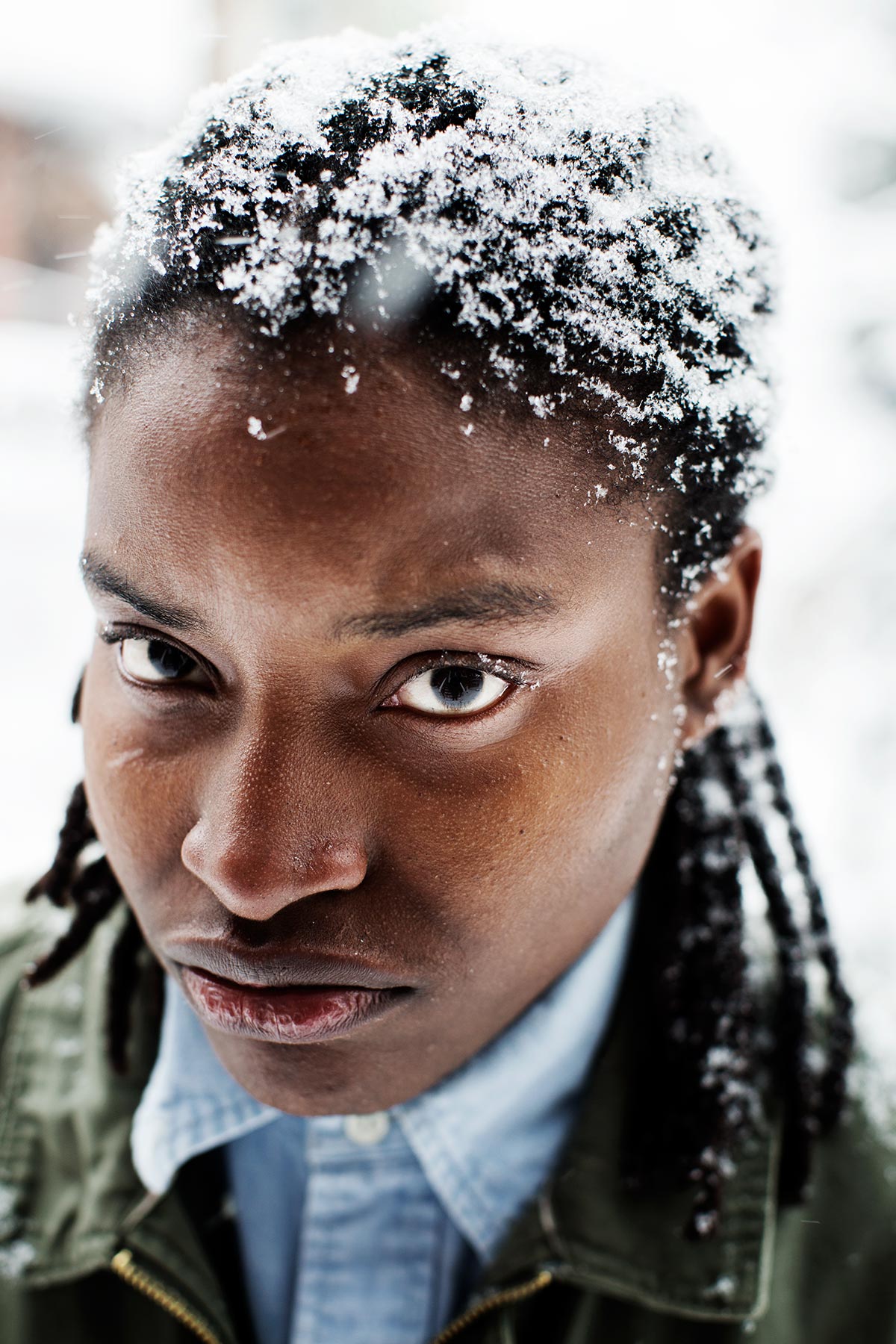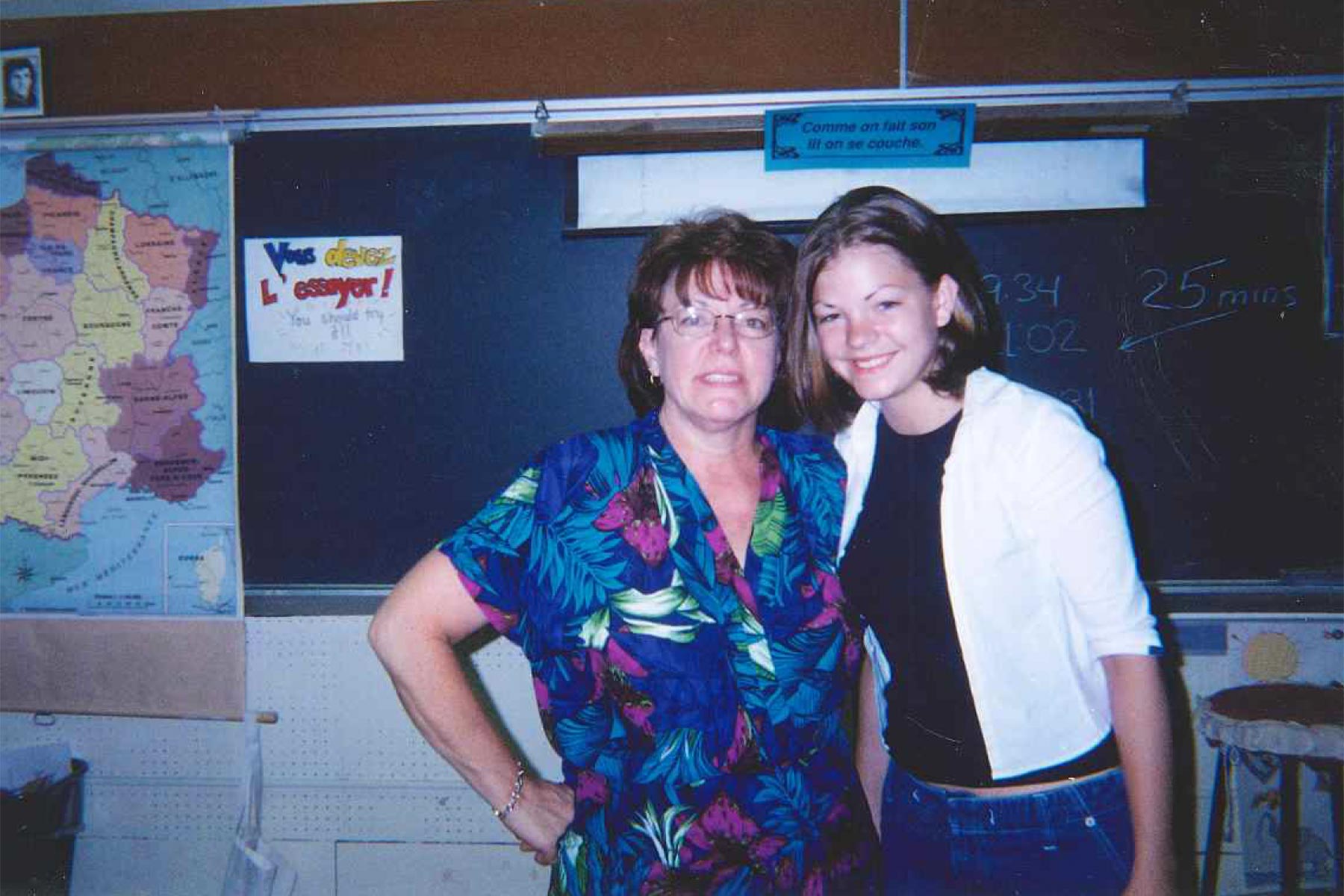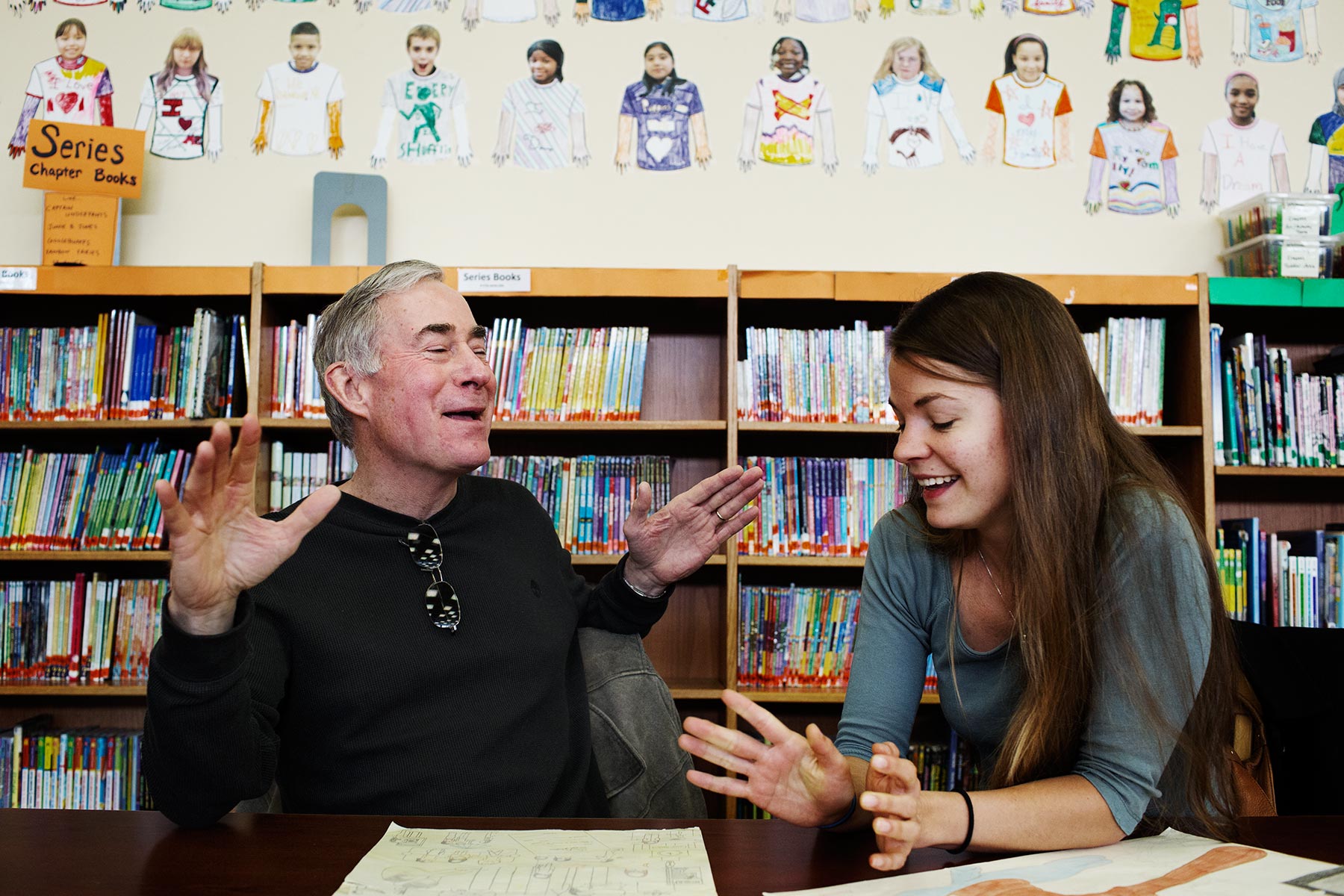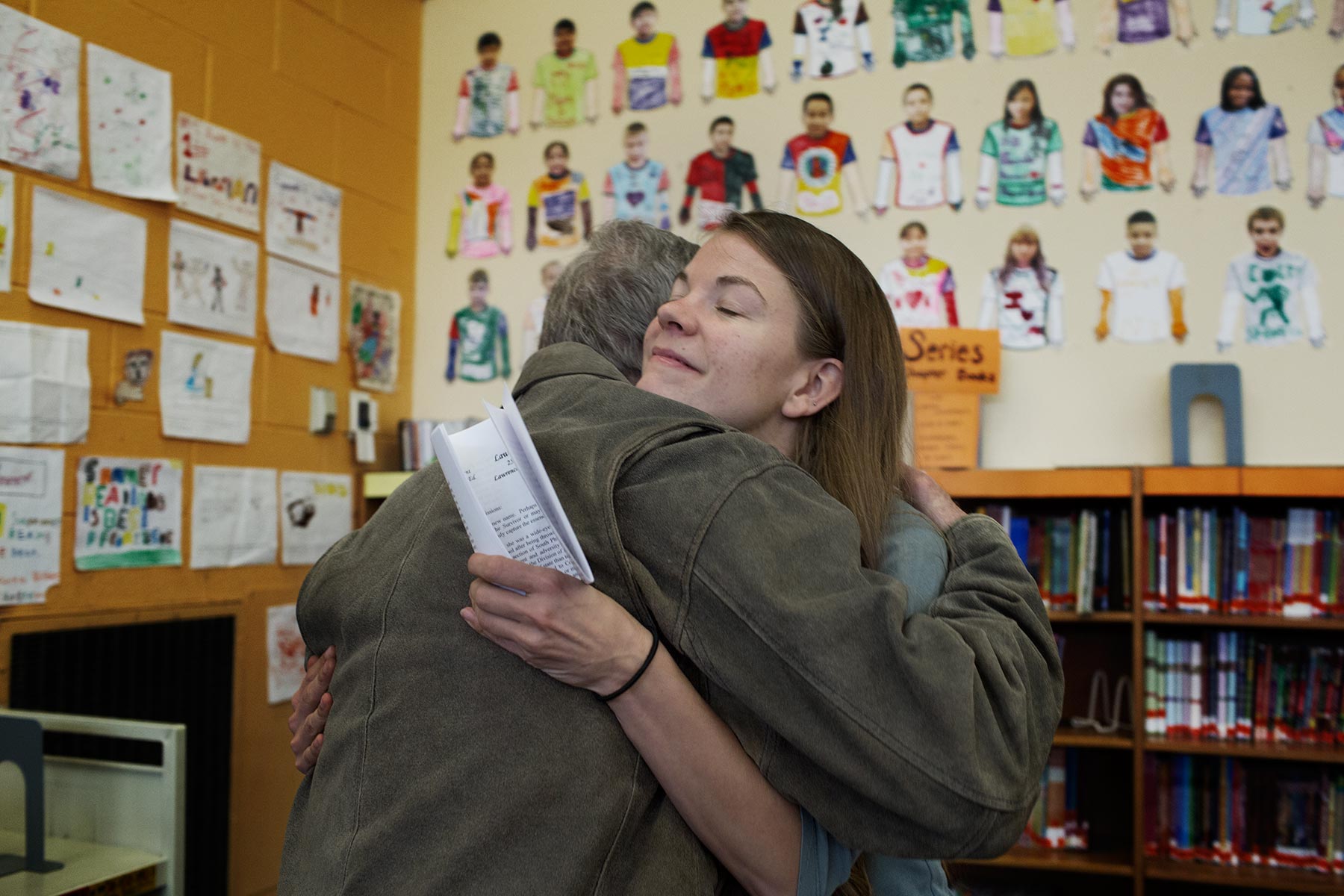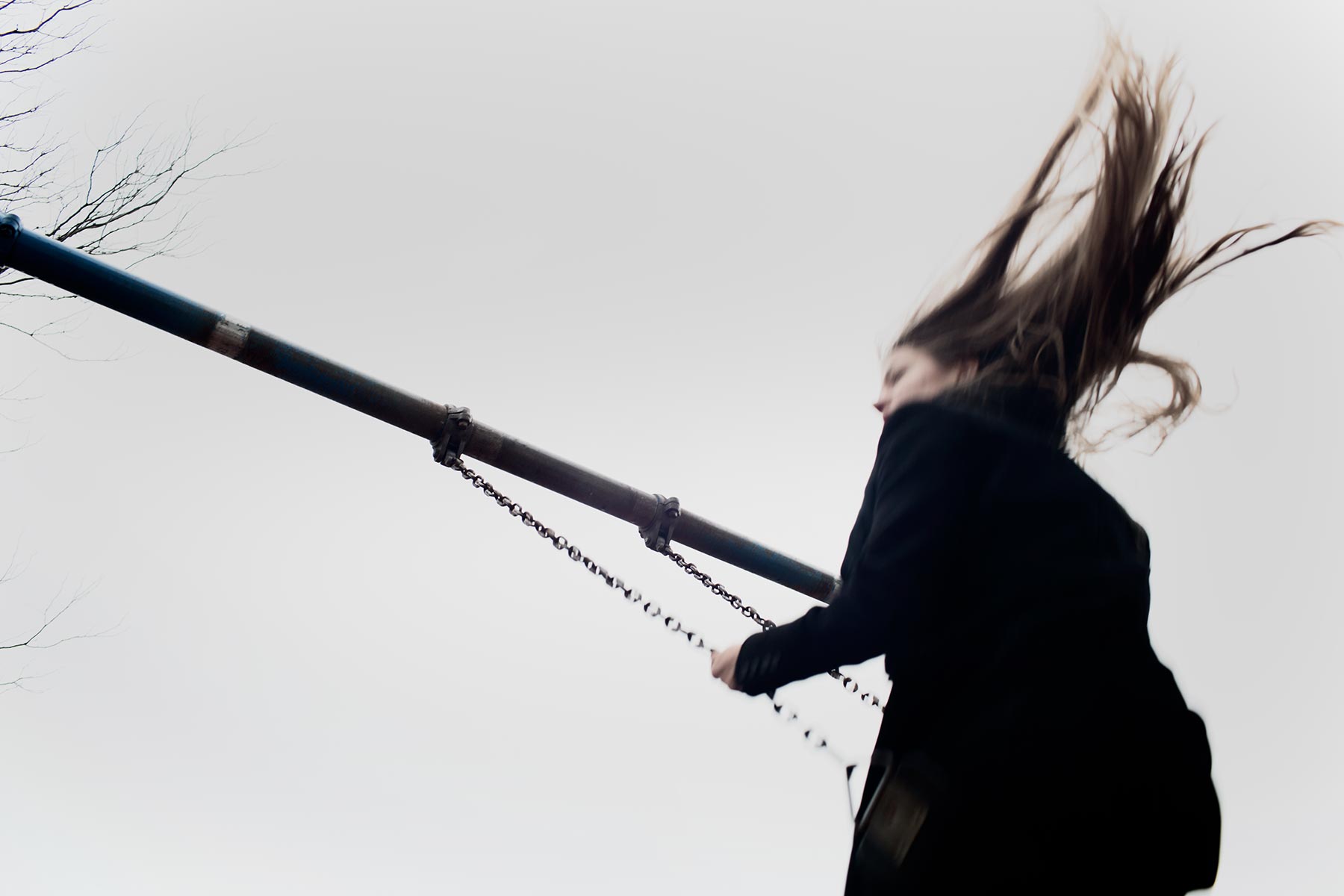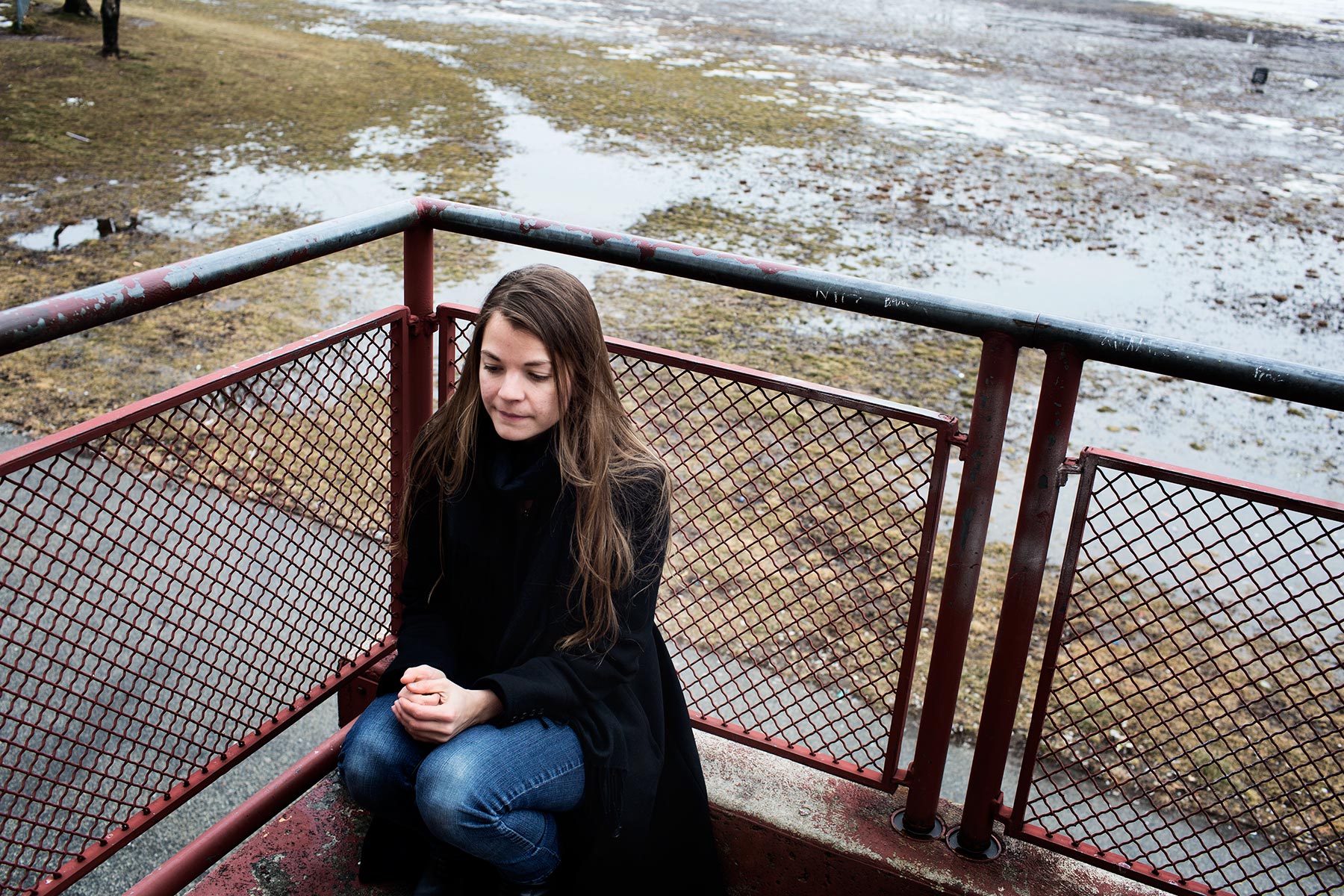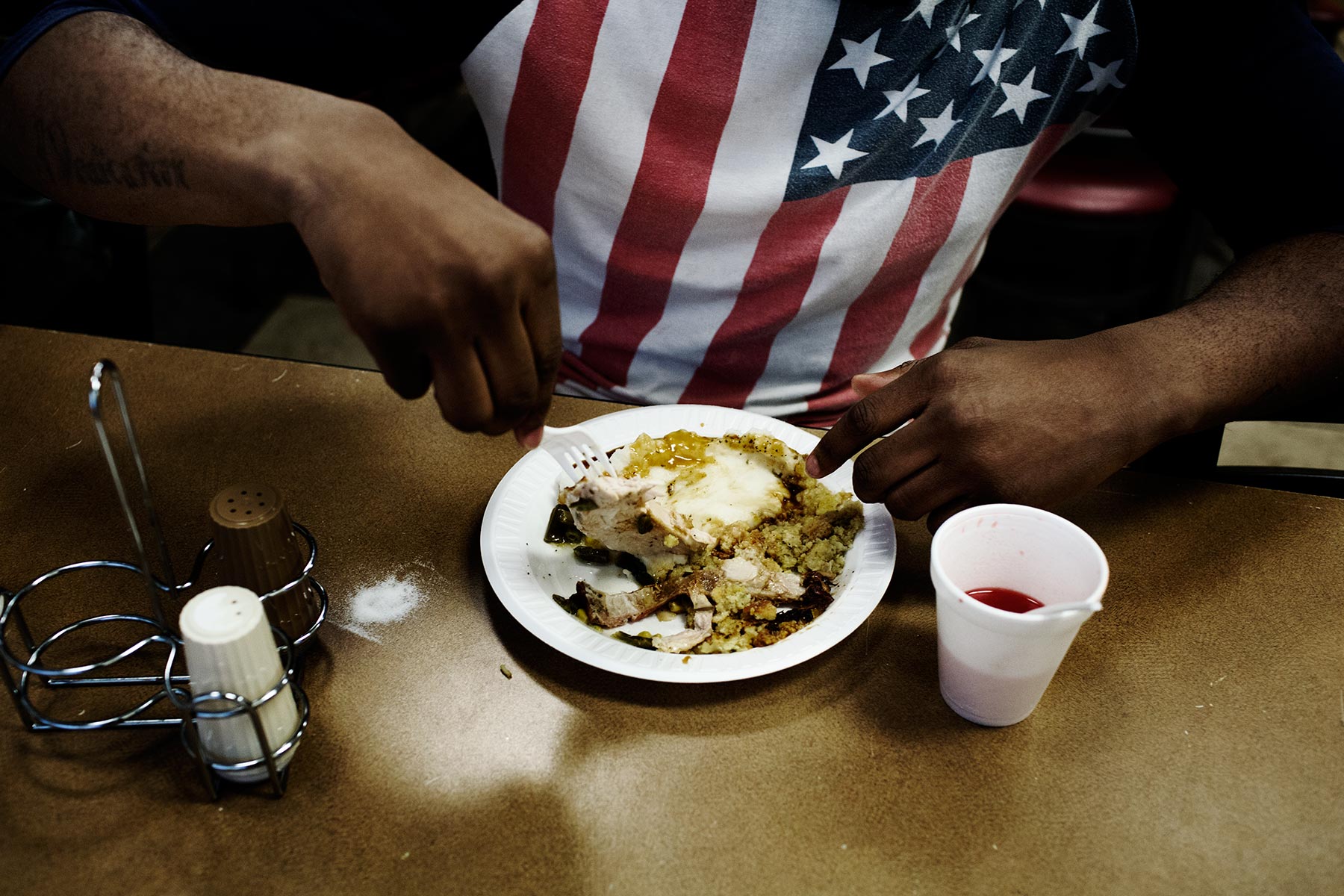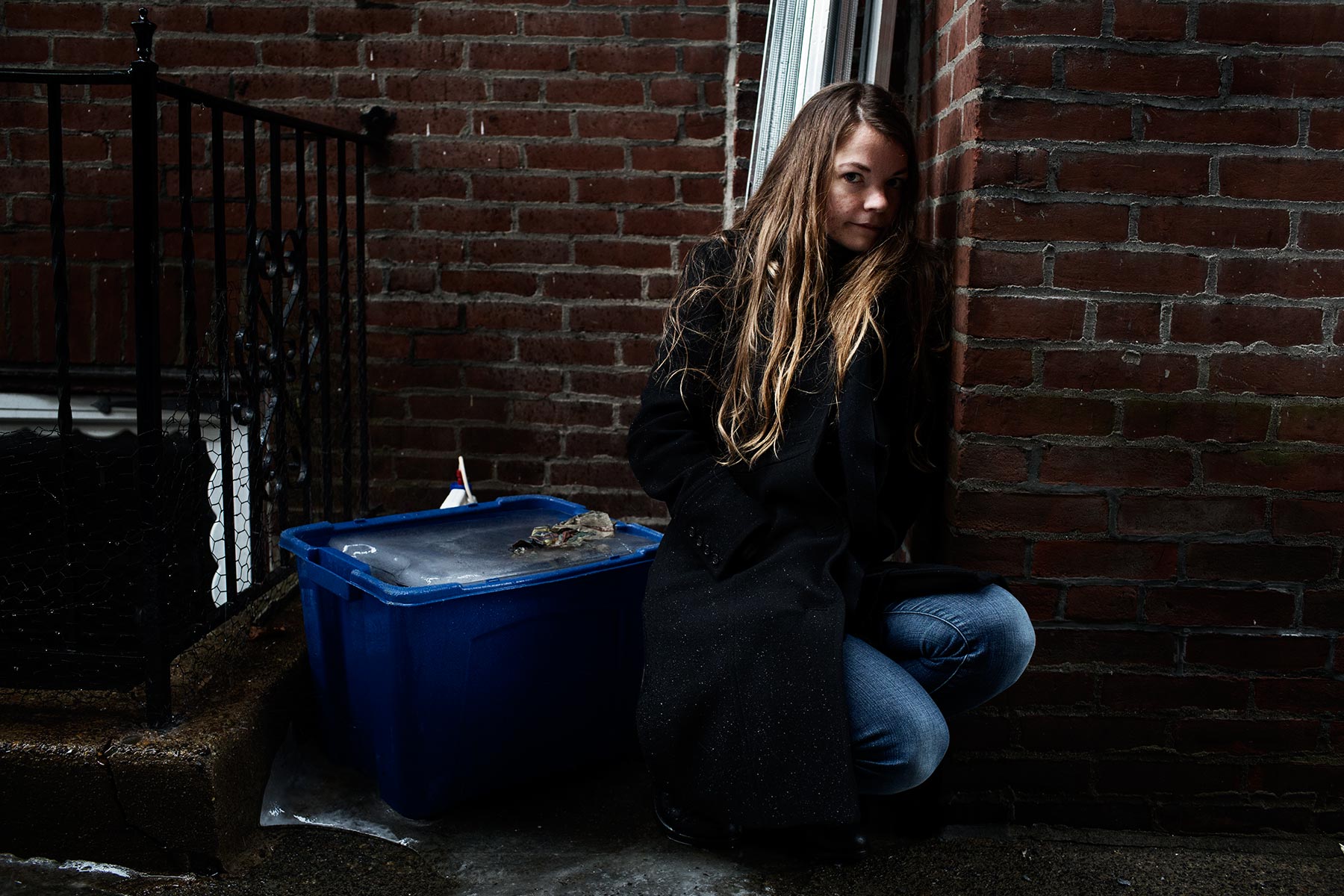
Philly’s invisible youth
The child welfare system continues to fail homeless kids — just as it did this reporter 17 years ago
When he was in high school, Darion* played basketball, football, baseball, track — every sport he possibly could. Not because the lanky teenager had ambitions of making the big time. His dreams were simpler: staying dry, warm and indoors — a refuge, however temporary from the streets. He was 16, he says, when the woman who had adopted him from the foster care system kicked him out of her home. Four years later, he still kept himself awake at night by walking the streets.
Darion says he feels alone. But there are 1.6 million others like him across the United States. He is an unaccompanied homeless youth, which means he is homeless while not in physical custody of his family. “Sometimes I feel I’m not worth anything to anybody,” he says. “I’m scared of myself. Scared of my past. Scared of the future.”
Like Darion, I understand all too well what it means to be a kid on the streets.
I was 14 the first time I knocked on the door of a shelter in Center City, 3 miles from where I grew up, in the City of Brotherly Love. I was holding a pamphlet my high school counselor had given me, which spelled out “Teen Hot Lines” in bold letters on the front. It was after midnight and I had run away from violence at home.
“How old are you?” asked the woman who opened the door. Sixteen, I lied. She said I had to be 18 to stay there. I had to leave.
When the door shut behind me, I took off running, afraid the woman would alert the police. It was the first and last time I tried to stay at a shelter.
In March, I returned to my hometown to search for youth like me. It had been 17 years since my first night on the streets, but I was shocked to find little has changed — and in many ways, the situation has gotten worse.
In 2011, 3,834 Philadelphia teens ran away or were kicked out of their homes, more than double the number from two years prior. From 2009 to 2013, the percentage of Philadelphia’s public school students who had ever experienced homelessness increased by 73 percent.
The problem is enormous, and it is growing.
There are many reasons youth end up homeless. Some run away from their families, as I did. Some are kicked out of placements, as Darion was. Most are trying to escape violent homes. And unlike homeless adults and families, unaccompanied youths have no place to go: There’s a severe shortage of shelter beds and almost none are earmarked for them. Meanwhile, the Department of Human Services, the city’s child welfare agency, too often fails to intervene in cases of alleged abuse or neglect, leaving young people with the impossible choice of staying in violent homes or living on the streets.
I interviewed dozens of homeless young people for this story. Mine is a perspective suspended between detached reporting and subjective experience. You should know where I stand.
When Darion first became homeless, in 2010, his best friend, Kydaire Bennett, tried to offer a patchy safety net, the best a 15-year-old could muster. Kydaire shared money and food whenever he could. On the coldest nights, he would let Darion spend the night, against his mother’s rules. “His mom didn’t want me there, because she had seven kids,” Darion says. “He would let me stay there, and she wouldn’t even know.”
“She had a lot on her plate and I was adding to it by helping him,” Kydaire adds. “He made it really far. I’m happy that he is still here.”
The young men have been friends since they were 8, and their friendship is a solid foundation in Darion’s chaotic life. The boys grew into adolescence together, testing their independence in a world that isn’t always receptive to young black teens.
There are no parents or siblings lurking in the folds of Darion’s memory, no recollections that might point to where he came from before he cycled through the child welfare system. He has always been an orphan.
“I don’t know what it’s like to have a family that cares about me,” he says. “My friend Kydaire . . . [is] the closest thing to family that I have.”
Darion moved around a lot as a kid, until his last foster placement became a permanent home when he was 9. “I thought adoption would be a good thing,” he remembers. “I thought it would be different.”
When the woman who adopted Darion kicked him out, Kydaire says he was flabbergasted.
“How can somebody who’s supposed to look after somebody … just cut them loose like that?” Kydaire sputters. “At least be somewhere he can come back to.”
“I was mad because I didn’t know where to go,” Darion remembers. “I didn’t have a plan. But I was also kinda happy because I didn’t have to deal with her anymore. … She was always angry. After a while, I kind of learned to deal with it.”
Darion always suspected that the woman who adopted him was trying to replace her dead son and wondered if she resented him for not measuring up. He says she beat him from the outset. Based on his experience in the system, he figured it was useless to tell the social workers. “She made it seem like if I told them, nothing would have happened,” he says.
By age 9, Darion understood that Philadelphia’s child welfare system was hardly a safety net. He was right.
The city’s child protection agency, the Department of Human Services is a large and well-resourced agency that employs 1,600 people, 500 of them in the Children and Youth Division. Yet children under its supervision have been turning up dead for decades, dying from severe neglect, starved and locked away from public view in bedrooms or basements. A 2007 review of the agency cited its “reduced … ability to safeguard children” as a primary concern.
The horrific death of 14-year-old Danieal Kelly on Aug. 4, 2006, due to severe neglect by her parents galvanized investigators, who issued a scathing indictment of DHS in a grand jury report on Kelly’s death. At the time of her death, Danieal weighed 42 pounds, was 3 feet 4 inches and covered in bedsores that had rotted down to her bones.
From 1997 to the day she died, according to the grand jury report, “DHS received a total of 11 reports that the Kelly children were being neglected or abused.” The reports languished, listed in DHS’ database as “pending determination” for years because social workers and their supervisors simply did not investigate them.
Constrained by cerebral palsy, which she’d had since she was a baby, Danieal was often forced to remain in a small stroller, soaking in her own urine and feces. She spent most days screaming, according to the grand jury report, locked in a dark bedroom, begging her brothers for water. Her mother did not like to touch her and restricted Danieal’s food and water intake to prevent her from urinating and defecating. The day she died, she was only able to say one word: “water.” Her 12-year-old brother testified that she said it 10 times that day.
When Danieal’s body was discovered, with maggots thick in her flesh and flies around her mouth, the social workers who had been responsible for her case gathered in their supervisor’s office to write a year’s worth of false progress reports. They had gotten away with it before. When the administrator in charge of Danieal’s case was questioned about the backdated reports, she said it was a common practice at the agency.
The caseworkers, Dana Poindexter and Laura Sommerer, who had falsified case notes for visits they never did, had been rated “outstanding” and “superior,” even though Poindexter had had another child die on his watch. At the time the grand jury report was issued, both were still employed by DHS. After Danieal’s death, two of the supervisors in charge of her case were promoted.
“While these employees were surely ineffectual, they were not anomalous. They were the inevitable product of an institution that had the means to do better, but not the will,” reads the grand jury report. “There was plenty of manpower at DHS, therefore, to make sure that Danieal Kelly received the services that would have not only saved but improved her life. The failure to do so was a failure of inclination, at every level of the agency.”
DHS declined to comment for this story.
In 2013, there were 1,500 investigations that involved children whose families had been investigated before. Of the children who died from child abuse in Philly that year, 37 percent had been the subjects of previous child abuse investigations. There is no three-strikes-and-you’re-out rule for Philly’s child welfare system. There is no limit to how many complaints DHS can receive about a single family before the child is taken away.
I was 15 when my high school counselor called DHS to report child abuse. Two social workers showed up on our doorstep and questioned me in front of my parents. As they followed me down to the basement to see my bedroom, I was petrified. I had little faith the women would help me.
Mine was one of 12,888 abuse and neglect reports filed in 2000 by DHS. My parents had been investigated by the agency before, to no avail. My siblings and I were never removed. I remember the investigations being traumatic and offering little help.
Like many kids, I learned to fear DHS. Their presence only seemed to make things worse. Fleeing seemed like a far more effective solution. An aunt invited me to stay in her overcrowded two-bedroom apartment while I figured out what to do next. When I was 16, I moved out so that I could become an emancipated minor, working multiple part-time jobs and alternately couch-hopping and sleeping on the streets.
“[Kids] are running away from the system,” explains David Fair, deputy chief executive officer at the nonprofit child welfare agency Turning Points for Children. “Their definition of what’s safe is different from our definition of what’s safe.”
Homeless youth are difficult to identify, according to Philadelphia’s service providers. When asked about the city’s homeless youth population, every social worker, attorney, nonprofit director, shelter staff member and advocate I spoke to used the same adjective: “invisible.” Yet they’re everywhere.
Most of the city’s homeless youth couch-hop; sleep on buses and subway trains or at playgrounds; or, like Darion, stay awake through the night wandering the city’s streets.
“Our kids are riding the El back and forth or the 23 bus,” says John Ducoff, executive director of Philadelphia’s Covenant House, a Catholic shelter. “They’re sleeping in abandoned buildings. They’re not sleeping on a grate in Center City.”
There are not many safeguards for the teens who do wind up homeless in the City of Brotherly Love. There simply aren’t beds available for all of them.
According to the 2014 housing inventory from the Philadelphia Office of Supportive Housing, the city has 4,165 emergency shelter beds, 70 of which are specifically reserved for youth — far fewer than the population of homeless adults and youth.
Of these spots, some come with funding restrictions and requirements. For instance, 20 beds at the Youth Emergency Service are for minors. Some of the beds are made available to children placed by DHS or other city agencies.
Covenant House, a national network of youth shelters, makes up the remaining 50. The shelter, which opened its doors in 2001, currently offers those beds for young people who are 18 to 24 years old.
When youth are unaccompanied homeless minors, the city’s adult and family shelters will not provide them an emergency bed. “We cannot serve anyone who is not completely emancipated or under the age of 18,” says Marie Nahikian, director at the Office of Supportive Housing. She cites a state law to argue unaccompanied minors are the sole responsibility of DHS. However, there is no law that prohibits the city from providing youth-specific emergency shelter for unaccompanied homeless youth, including minors.
When it comes to questions of legal custody for unaccompanied minors, Ducoff agrees: “DHS is responsible for these kids.” When youth under 18 seek shelter at Covenant House, he says they are obligated to alert DHS and that the agency is supposed to respond immediately by taking custody of minors. “If the kid is 13 or 14, DHS will show up. If they’re 17, DHS is not going to show up,” Ducoff explains. “Their response tends to vary. Sometimes they say they’ll be there in an hour and sometimes they say it’s fine for them to stay with [us].”
According to the city’s street count in June, 66 percent of the homeless youth counted were couch-surfing; 22 percent were sleeping outside; 2 percent were sleeping in subway stations; and only 8 percent were staying in shelters.
At present, the federal definition for homelessness does not include couch-surfing. Consequently, the Mayor’s Office noted that federal funds cannot be used to house homeless youth in this category.
There’s no money for more because it’s not prioritized, says Fair of Turning Points for Children: “Adolescents are the throw-away population. It comes down to a lack of political will,” he says. “There’s a billion things we can do but we don’t want to spend the money.”
Brandon Stokes was raised in the city’s shelters. His mother became homeless when she was pregnant with him, he says, and his earliest memories are of waiting: for food, for placement each night, for clothes. He remembers the perpetual feeling of hopelessness that pervaded each shelter. “It was chaotic because there was no structure. … It’s just a bed,” he says. “The staff are depressed and overworked. So I started to withdraw.”
When Brandon turned 18, he was no longer allowed to stay in the family shelters. He tried staying at shelters open to adult men, which were much worse. He recalls bed bugs, dim lights and men shooting up or smoking crack in the bathroom.
Adult shelters are like “hell on earth,” Brandon says. “No person deserves to live in those kinds of conditions.”
In many ways, sleeping on the street felt like a better option. He says he will never forget one of his worst nights. He had nowhere to go, and the temperature had fallen low enough to qualify for a code-blue alert. He settled for a bench in Rittenhouse Square. It wasn’t his favorite park in the city — too many rats, he says — but it was in one of the city’s ritziest neighborhoods. The park was routinely patrolled, and when the cops woke him up and told him to move, Brandon obliged. He shuffled under countless streetlights, lumbering slowly on numb feet. It took a while to find a more out-of-the-way bench. Not long after he drifted off, Brandon was prodded awake once more. At a loss for where else to go, he collapsed under an overpass.
When someone gets hurt, Brandon says, the first responders to arrive at the scene “usually aren’t gonna be cops. It’s gonna be an ambulance.” But for a homeless person, “they send out the cops. I find that odd and callous.”
When Brandon’s younger brother aged out of the family shelters a few years after him, the pair made their way to Covenant House. They stayed for a year while they saved for an apartment of their own.
Covenant House was the first place he felt cared about, Brandon says. “I could approach [the staff] … and get real advice,” including etiquette tips for job interviews. “At Covenant House, I met people who filled in the blanks for me.”
When I was homeless, I would fall asleep cold and wake up colder. I never got used to it. Like many kids, I worked hard not to appear homeless, hoping to avoid the stigma and violence from my peers and on the streets. Too afraid to sleep on the benches in plain sight, I slept under them. I slept at playgrounds because they felt safer. I stopped when a group of boys found me one night. I was on their turf — a spot for midnight dealings.
Once, I woke to an old man with his pants unzipped. He was homeless too, wearing layers of clothes, likely everything he owned. After that, I started wrapping my hair in a bun and pulling my hoodie over my head, hoping to disguise my gender, because bad things happen to homeless girls. I hugged my backpack when I slept and strapped money to my calf with a rubber band, hiding bills under my jeans so my pockets would be empty. I stopped letting myself cry and started believing that I deserved it.
After a few months, I told myself that I was succeeding at homelessness. I learned that the guys who work the overnight shift at Dunkin Donuts would give me the donuts they’d otherwise throw away at 3 a.m. I would treat myself to a syrupy-sweet hot chocolate that I nursed, laying my head down on the neon orange tabletops in the back.
“Who’s homeless?” asks Carrie Jacobs, executive director of the Attic Youth Center, a social services agency for Philadelphia’s LGBT youth. “A lot of gay kids, a lot of black kids.” Forty percent of homeless kids are lesbian, gay, bisexual or transgender. When it comes to group homes and shelters, queer youth are more likely to experience discrimination and harassment.
“There’s a history of homophobia in the system. … That’s exactly why kids leave the system,” Jacobs continues. “They feel safer on the streets.”
That’s why it took courage for Pedro Santiago to call Covenant House and ask if it was safe for gay kids. Originally from Camden, New Jersey, on the other side of the Delaware River, the young man found himself homeless in Philadelphia after a fight with his mother’s boyfriend. He offered to pay $75 every two weeks to stay at a friend’s house, but her boyfriend kicked him out when he found out Pedro is HIV-positive.
It’s always hard to tell people because of how they look at you, says Pedro, now 21. “Others didn’t like who I was. … It hurt me, especially because it was like, ‘Well, where can I stay?’ ”
Living on the streets is even more dangerous with a compromised immune system. “I don’t need to be out in the cold, because I could die in a couple months,” Pedro says. He was too scared to go to adult shelters after hearing about the violent experiences of his peers. He tried to stay with another friend but left when it turned out the friend wanted sex in return.
On a few occasions, he bunked down in the city’s sprawling Fairmount Park. Sometimes he slept alone on the grass, but one evening he met another teen sporting fresh bruises. “He was tired of being beaten. It was a family matter,” Pedro remembers, and the kid didn’t want to go to the hospital. “We literally stayed up the whole night just trying to protect each other.”
Often, the only resource queer kids have is each other. Tash*, another homeless kid, knows that while being female made her a target, looking queer seemed to double the likelihood of being attacked. “It is different when you a female and wear guys’ clothes,” she says. “People get offended.” She sees her role as offering protection to younger butches who wind up on the streets. “Some of the young ones … look up to me,” she says. “I’m not the only one who’s been through things. … Giving up is selfish. I’m here for a reason.”
Tash was born into a family marked by generations of poverty and addiction. Most of the children in her immediate and extended family were removed by DHS, including all of her siblings. She remembers her mother as always being homeless and as having contracted HIV after she was raped on the streets. Although she only saw her mother a handful of times, Tash remembers she enjoyed crossword puzzles and listening to gospel singer Mahalia Jackson. On her seventh or eighth birthday — Tash isn’t sure which — her mother gave her a Walkman and the change in her pocket. “I didn’t know what to call her,” Tash says. “I don’t think I ever told her that I loved her.” By the time Tash was 10, her mother was dead from AIDS.
Tash was raised by her aunt, who had an explosive temper. “She would beat us and cuss us out,” Tash remembers. “She would say I’d grow up to be a crook and a thief.” Her aunt kicked her out when she was 16 or 17, and, like her mother, Tash found herself sleeping on benches and riding the El train to keep warm. “The things that matter, I lost before I even got here,” she says. “I never wanted to be just a statistic.”
Tash tried going to Covenant House once, only to be turned away because the shelter was full.
“We do not have enough services to meet the need,” says Covenant House’s Ducoff. “We’re turning kids away every day.”
Although there are many similarities in our stories, I had some added protections that Darion, Brandon, Pedro and Tash do not: white skin, blonde hair, blue eyes — attributes that made me a victim more “deserving” of help.
Brandon is tall and broad and black. Far more doors, physical and metaphorical, have been slammed in his face than mine. He remembers being 16: “People avoided me and didn’t really speak to me,” he says.
Once, he tried to ask a teacher for help after class. She was an outspoken liberal in the classroom, but when she saw Brandon waiting outside her classroom door, she didn’t recognize him and took off running. “I tucked it under my hat,” he says, figuring there wasn’t much to say about it. “It was an eye-opener.”
Black boys make up 44 percent of the homeless youth population in Philadelphia. They are likely to be seen as dangerous. The boys know this.
“They’re perceived as threatening thugs, wild, loud and ignorant,” says Jacobs of the Attic Youth Center. “These perceptions impact care and service. How will race impact the way [social workers] help a young person?”
School was always a haven for Brandon. He didn’t go to good ones, but they provided the essentials: warmth, lunch and a locker to stash his food and clothes. Librarians were kind to him, and the space was quiet.
“I would get hall passes and sneak away to the library,” he remembers. “There was no real discipline and they didn’t teach much. One teacher would do real estate deals” while students played cards, watched a movie or chatted.
Like Brandon, Tash considered school an anchor. She also sought refuge among the book stacks, and sometimes the cafeteria was her only source of food. When she was in 10th grade, a representative from the after-school Mural Arts Program came to her class to recruit kids, and Tash signed up. The program became a lifeline, offering her a stipend, extra meals and a positive outlet for her feelings, a place where she was encouraged to pursue her dream of becoming an artist.
One winter, much to her amazement, her project supervisor invited Tash to live in her home for four months. “[She] opened up a room for me and let me be around her family,” Tash marvels. “Sometimes, strangers treat you better than your family.”
Similar to Tash, several of the youth I spoke with said they were taken in by teachers during the harshest winter months, when they had nowhere else to go. One of Darion’s let him move in for a few months one summer.
“He knew I was outside on the streets, so he told me to come stay with him,” Darion recalls. “I don’t like asking people for things. … I dunno — it kind of breaks me a little bit.”
It is hard for teenagers with troubled backgrounds to trust teachers. It doesn’t seem worth the risk of being hauled off to yet another placement or crisis response center. Or worse yet, risking rejection.
I started running away from fights at home when I was 14. One night, I fled into the rain with my giant stuffed dog called Cuddles, heading for a place I felt safe sleeping. I didn’t have a coat on and within minutes both Cuddles and I were drenched. After a few blocks I realized that the stuffed toy could identify me as a runaway and make me a target. I ducked into an alleyway to bury Cuddles in a trash can.
When I reached the spot, my teacher’s house, I lay down under a windowsill on the cold, wet cement. The raindrops felt like they were falling through me. I hated myself for leaving Cuddles behind.
I slept next to the house of my high school history teacher more than once, not because she was kind, but because of her proximity to where my family lived. She could identify my body if anything happened to me, I figured. I only ever knocked on her door once, backing away as her father told me she wasn’t home. It felt safer to sleep under her window, but I didn’t tell her, because I thought she would chase me away. And I believed that I would deserve it.
When I returned in March to my old history teacher’s door, the temperature was below freezing and a snowstorm obscured the weak winter sun. Her father once again answered my knock; he didn’t recognize me, but she did. She told me to stay outside. As the wind blew sleet into my face, she said she would not speak to me.
I had been hoping for a warm reunion. But when I told her about my hideout under her windowsill, she said I had been wrong, inappropriate even, to sleep next to her house. “That’s my career you’re jeopardizing,” she said. “As cold as it sounds, you were just one of the kids.”
My teachers and counselors often knew that I didn’t have a safe place to sleep. Several were perceptive enough to understand that my life was abnormally chaotic. One high school guidance counselor, Mark McGrath, describes his first impression of me as “completely disoriented and afraid of human contact.”
“You were a baby on the streets,” McGrath remembers. “I tried, whenever possible, to throw you a lifeline.”
He was not the only one. The first teacher who invited me into her home was Charlene Steinmetz, a French teacher from my second high school; I had left the one I was enrolled in when I left my parents’ house. “You needed to know somebody had your back,” she says now. “I wanted you to be sure you had a place. I didn’t want you to get lost.”
When I transferred to my third high school in less than a year, Steinmetz gave me her number and told me to call anytime. I was certain I would never use it — until I did.
I called her one night from a pay phone. The weather was particularly terrible, and I had no place to go. She came right away. We hadn’t spoken in months, but she opened the door of her little red sports car and told me to climb in. She didn’t ask me any questions then, but years later, she told me she had noticed the dark circles under my eyes.
“I tried to give you a hug,” she remembers, “and it was like hugging a stiffened child. I tried not to suffocate you with attention.”
She offered me her daughter’s old room when we arrived at her house. When she closed the bedroom door behind me, I stared at the bed for a long time without moving. It was the most beautiful bed I’d ever seen, decorated with a pile of pillows and stuffed animals.
I was afraid of messing it up. So I slept on the floor next to it without taking off any of my clothes.
Steinmetz says she noticed the unruffled bed at the time, but didn’t remark on it. “I felt better knowing where you were for a little while,” she says. “I just wanted to know you were safe.”
I wasn’t the first student she had brought home and I wouldn’t be the last. “You have to do something,” Steinmetz says. “You can’t do nothing.”
She wasn’t the only teacher to offer me a safe bed for a few nights. McGrath and his wife once housed me for a week. He also insists on the importance of responding adequately — humanely — to the immediate and dire needs of homeless students.
“You would often ask me, almost as if it was a mystery to you, why people would look after you,” McGrath says. “You weren’t willing to accept help or even ask for it. … All it took was to just give you a little bit of help. We knew that would make a difference to you.”
Despite bouts of homelessness and unwanted attention from the juvenile justice system, Darion stayed in high school. In spite of 47 absences and 88 tardy arrivals, he managed to graduate. “I stayed in school,” he says. “My plan was not to be a dropout.”
He has reason to be proud. Youth are 87 percent more likely to drop out of school if they’re homeless, according to Maura McInerney of the local organization Education Law Center. Of those who stay enrolled, most bounce between schools, falling behind academically.
In Philadelphia, 1 out of every 20 high school students has experienced homelessness. McInerney has counseled homeless youth on the rights afforded to them under the 1987 McKinney Vento Act, which allows children to stay in the same school even if they leave the district due to homelessness. The federal legislation also protects the right of unaccompanied homeless youth to enroll themselves in school without parental permission. But a lot of kids don’t know their rights under the law, she says. A lot of schools don’t know either.
“Kids don’t have to provide documents; they can say they’re experiencing homelessness,” McInerney explains. By telling school authorities they are homeless, they have access to Title I funds that may, for instance, pay for uniforms or fees for tests like the SAT. “Housing is a critical problem for older youth,” McInerney adds. “They aren’t going to ask for help. You need to notice it yourself.”
Darion never said much; still doesn’t. At some point he decided it was best to keep his business to himself. He grew into an irreverent jokester, crafting a nonchalant persona to present to the world.
In March, he returned to Samuel Fels High School to visit his former counselor Ray Realdine. As Darion walked through the dim corridors, it was clear that even two years after graduation, he was still popular. Students and teachers gave him high-fives as he passed. When they asked him how he’d been, he repeated: “Good.”
Less than an hour earlier, Darion had been sitting in the school’s parking lot, tears sliding down his cheeks as he debated going in. It had been months since his last visit. Then, he had been doing well, proud to report to his former teachers that he had enrolled as a full-time student at the Pennsylvania College of Technology. It took him a while to screw up his courage and enter the big double doors in front.
In Realdine’s office, Darion sits up straighter than usual as they talk. When Realdine asks him how classes are going, Darion’s shoulders drop with a mixture of grief and shame. He tells the counselor he had to drop out of college because he couldn’t afford the tuition. A few uncomfortable questions later, the rest floods out: He doesn’t have any family support, and he’s homeless and currently staying at Covenant House. Realdine leans forward to maintain eye contact. “You gotta get back into school,” he says. “You’re too smart not to.”
Following Danieal Kelly’s death, the city established the Community Oversight Board in 2007 to monitor DHS. The COB voiced concern that DHS was still failing to visit children to investigate their well-being. By December 2013, the monthly compliance rate for visitation had decreased from 86 percent to a mere 66 percent.
Today, reforms in DHS include stripping the agency’s workers of all child welfare responsibilities except for the initial crisis response and assessment. If a report of abuse is substantiated by the intake workers, the case is referred to one of 10 new hyperlocal child welfare agencies, called Community Umbrella Agencies, that have taken over DHS’ case management responsibilities.
However, problems are already beginning to surface in the CUAs. Several child welfare workers say that the new guidelines are too cumbersome, CUAs are expected to do more with less funding, and their case managers and supervisors are too inexperienced to take over DHS’ caseload. Currently, the CUAs’ caseload includes roughly 5,600 kids, but the system was built for a maximum of 4,000. Turning Points is one of the new CUAs absorbing DHS cases and Fair admits that the caseloads are impossible.
That reality is evident in an August 2015 COB report, which noted that the CUAs’ monthly compliance rate for visitation ranged from 93 percent to a dismal 66 percent, exactly the same rate the COB reported for DHS at the end of 2013. The COB pointed out that the child welfare system is currently struggling with “significant” stress. “[C]aseloads are expected to rise due to staff retention issues, CUA management issues, and mostly importantly, new laws resulting in an increase in reports and investigations,” the report warned.
Which means the city’s child welfare system will continue to fail youth like Darion who disappear through the bureaucratic cracks into homelessness before they turn 18.
And when kids age out of the system at 18, there’s often nowhere else to go. DHS knows this. In 2014, 705 of the 1,051 youth who aged out had no permanent residence when they left their DHS placements. Up to 40 percent of youth who are involved in the child welfare system wind up homeless once they exit care.
“You have kids that were in foster care and reunified with families who abused them and they end up back on the street,” adds Covenant House’s Ducoff. “There’s this opportunity of adolescence where we can shift their path so they don’t become chronically homeless adults.”
Without access to resources, kids often rely on their peers when they wind up homeless. “From age 16 till now I’ve been on the streets, at a friend’s house, back to on the streets, back to a friend’s house,” Darion says. “I really thought I could figure this out on my own. But I wasn’t eating. I wasn’t really sleeping. It was cold. I kinda didn’t know what else to do.”
Darion admits that he wasn’t perfect. He shouldn’t have to be. No child should have to earn his safety net.
“You can’t just let somebody be on they own without no support or nothing,” says his best friend, Kydaire. “I did everything I could to help.”
After he visits with a few teachers, Darion meets up with Kydaire for the afternoon. They settle onto a park bench around the corner from Kydaire’s house. They lean into one another as they relax into memories of their boyhood adventures. The friends laugh about long bike rides to New Jersey and memorable snowball fights. It is clear they feel safe when they’re together.
Though he has had bouts of success — graduating from high school, a semester of college — Darion, now 21, has also continued to struggle with unstable housing (though he currently lives in an apartment with four other roommates). He is still trying to find work. In August, his birth mother found him on Facebook. Darion smiles when he talks about meeting his relatives for the first time. There’s a lot to catch up on, but for now, he still marvels at the way they treat him: like family.
Darion says he wants to get back into college: “I think there’s better things out there for me.”
Like what? I ask. To become an architect one day, he says — to build homes.
*Some last names of the homeless youth interviewed for this story are being withheld.
